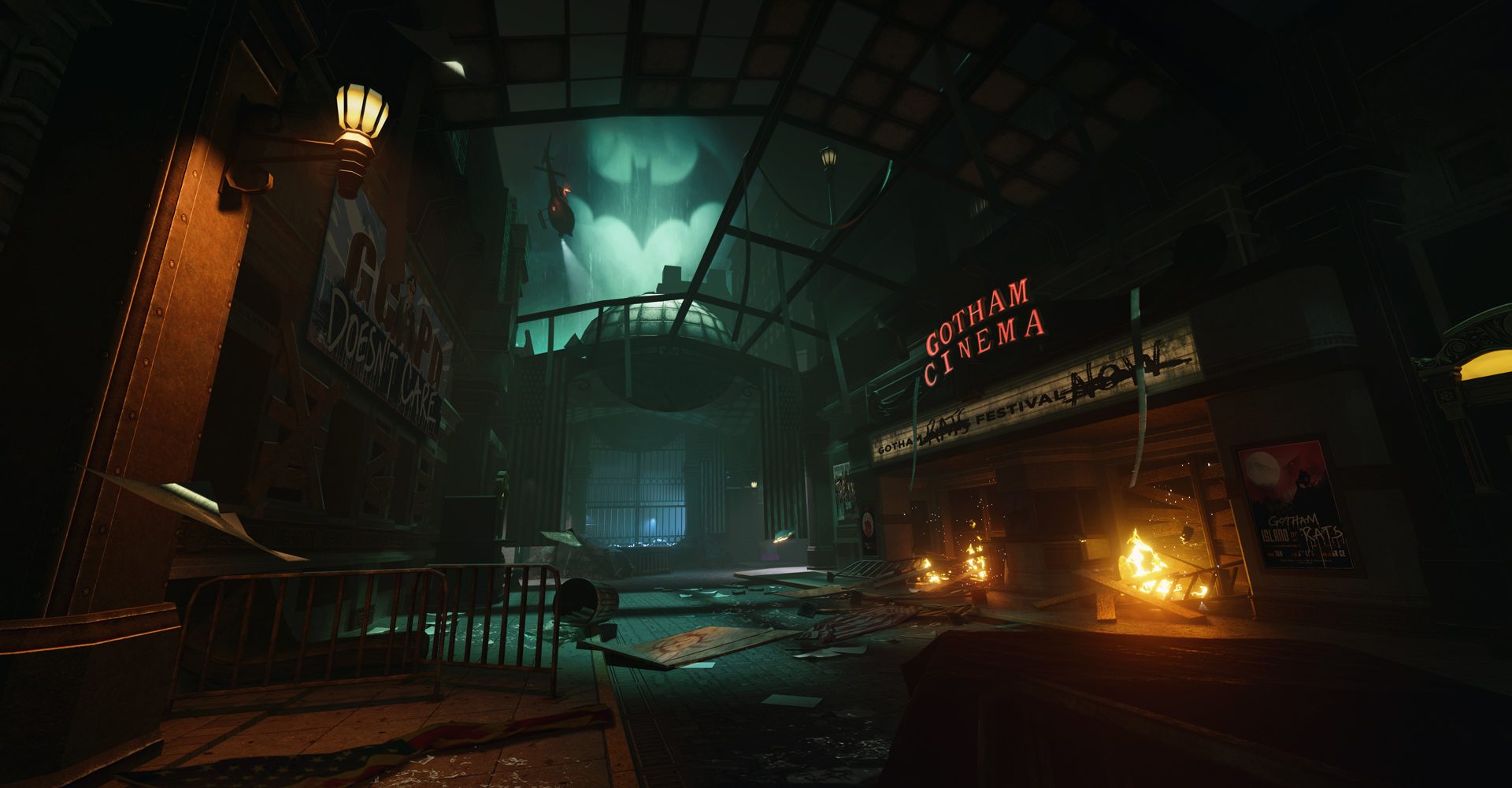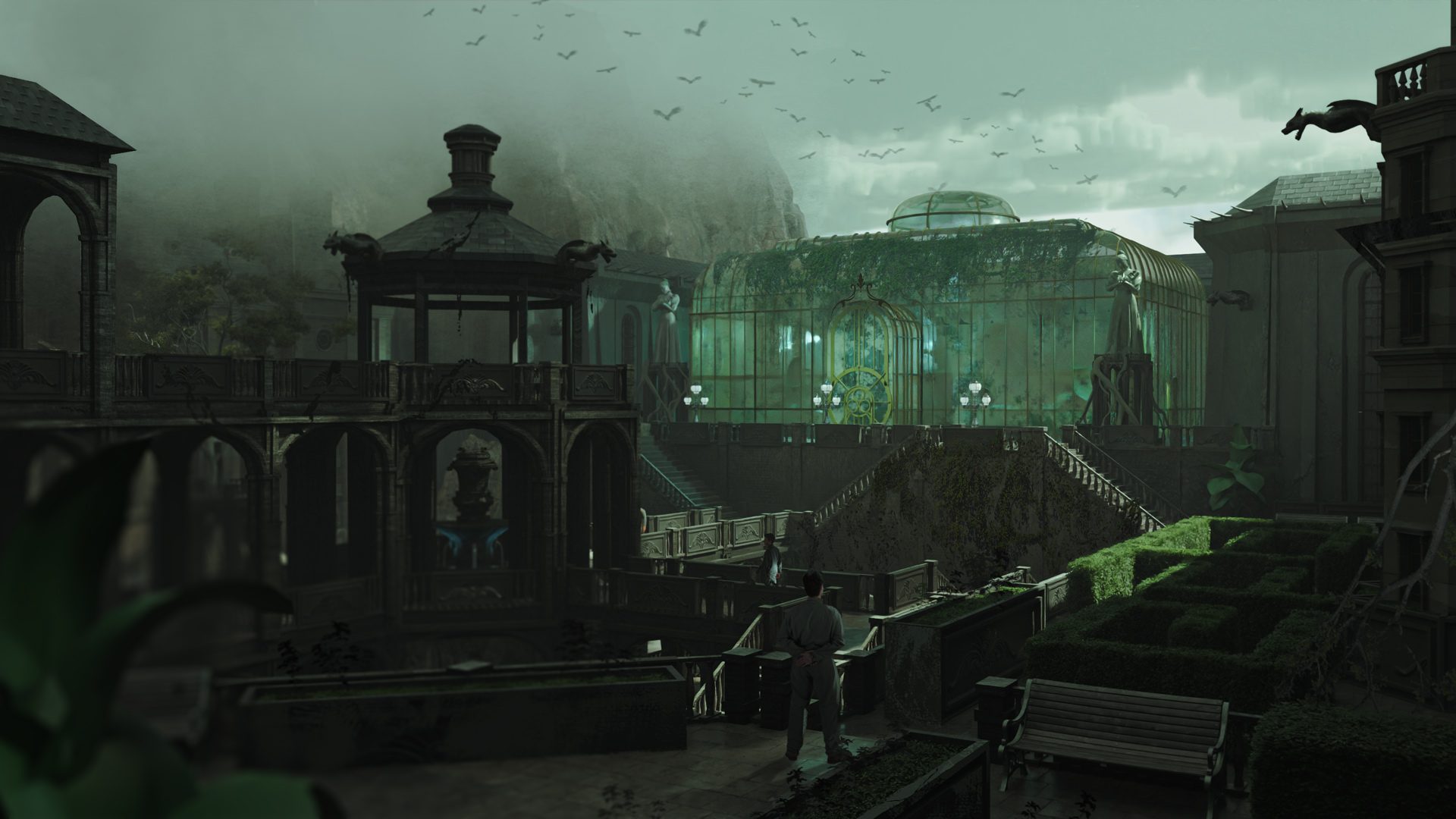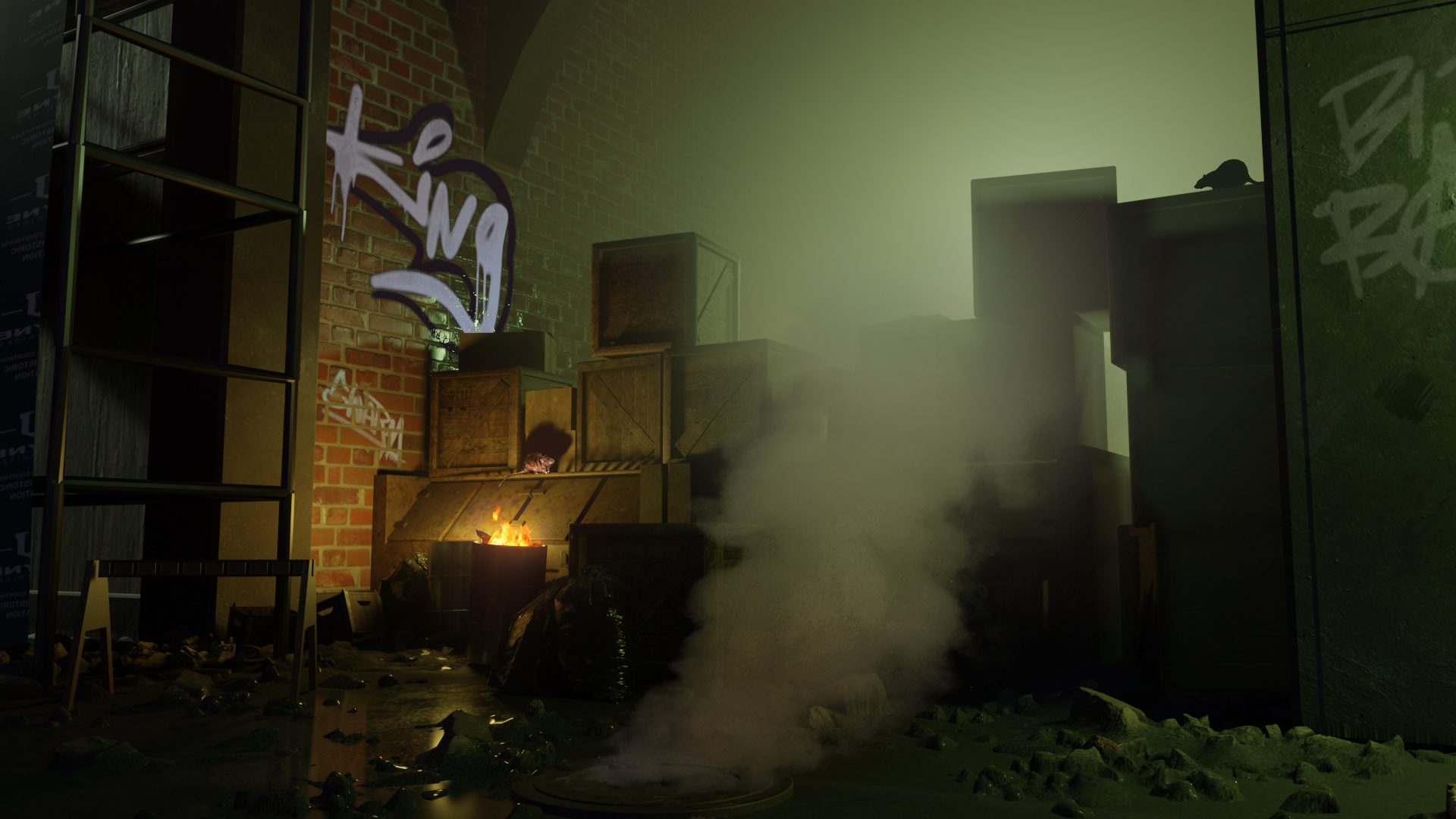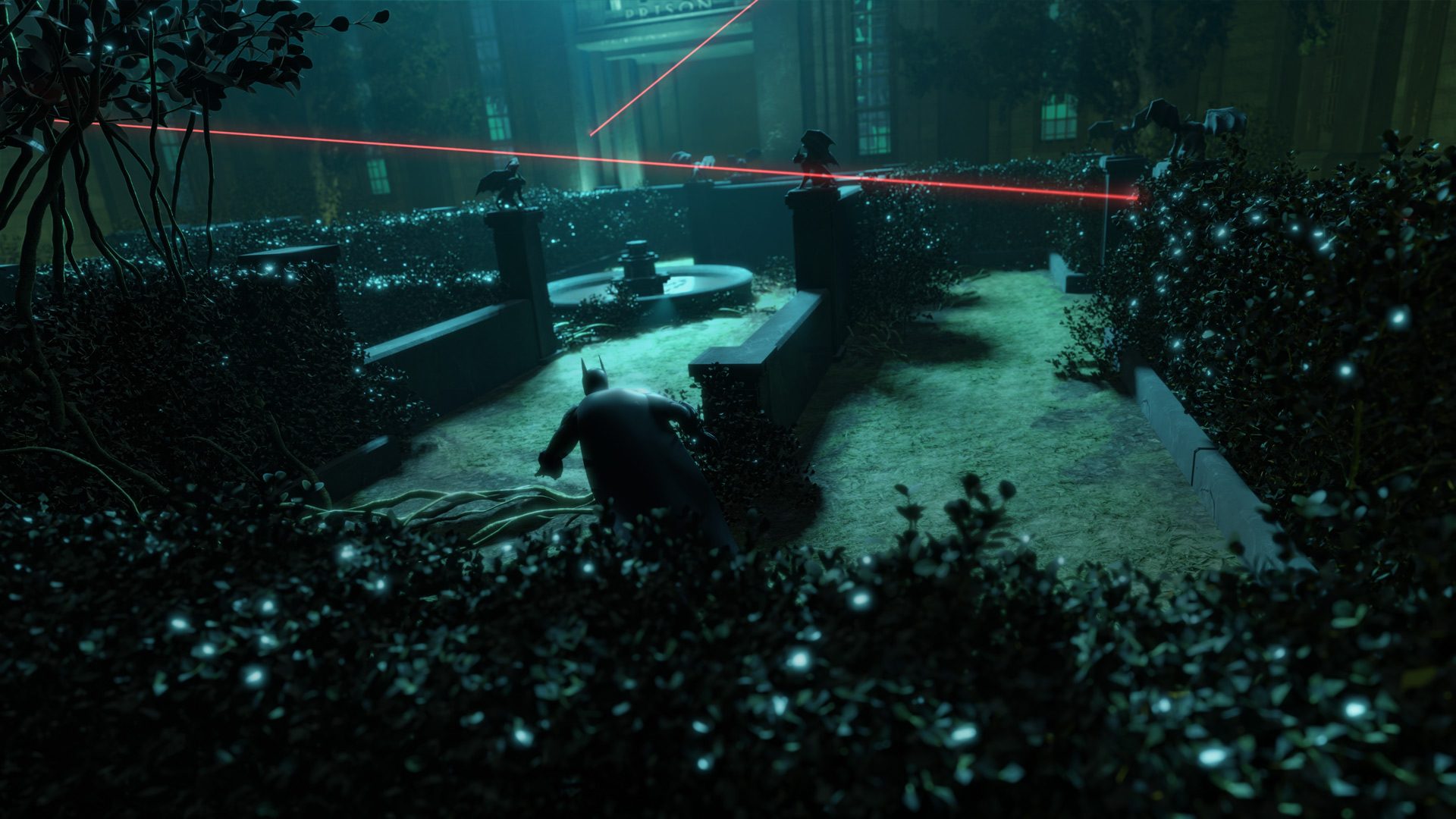A Classic Look for a Modern Game
 Although building a game for Quest 3 makes things more challenging due to the standalone headset being much less powerful than a modern game console or PC, the choice of an Arkham game specifically actually had a hidden advantage. Because the visual foundation of the series is ultimately based on Arkham Asylum (2009), the graphical bar to match was more forgiving than trying to evoke the graphics of a modern AAA game.
Although building a game for Quest 3 makes things more challenging due to the standalone headset being much less powerful than a modern game console or PC, the choice of an Arkham game specifically actually had a hidden advantage. Because the visual foundation of the series is ultimately based on Arkham Asylum (2009), the graphical bar to match was more forgiving than trying to evoke the graphics of a modern AAA game.
Still, getting the look right required not just lots of optimization work, but also really understanding what makes an Arkham game look the way it does. Art director Matt Kohr explains how the studio approached this challenge.
“We did a lot of homework! By absorbing the classic games, we began to discover the visual hallmarks that define the Arkham look. After understanding these ingredients, each environment became a visual puzzle, balancing technical and graphical priorities,” he says. “Small indoor areas allowed us to layer dense set dressing for that classic Arkham grungy look. Larger outdoor areas needed to take a more spartan approach to set dressing, freeing up processing power for exploration.”
 “By understanding the visual DNA established by [the original Arkham developers], we were able to selectively balance the ingredients for each scene’s technical needs. Gotham, for example, relied heavily on the look of existing models and textures. Guiding the player through the streets of Gotham City, in first person, proved challenging. Reimagining the lighting scheme allowed us to emphasize the important paths and highlight our combat arenas,” says Kohr.
“By understanding the visual DNA established by [the original Arkham developers], we were able to selectively balance the ingredients for each scene’s technical needs. Gotham, for example, relied heavily on the look of existing models and textures. Guiding the player through the streets of Gotham City, in first person, proved challenging. Reimagining the lighting scheme allowed us to emphasize the important paths and highlight our combat arenas,” says Kohr.
 “VR invites the player to slow down and soak in environmental details. Our sewers and hotel interiors, for example, featured set dressing similar to traditional first-person environments. We added more human scale set dressing to those spaces: objects to pick up, graffiti to read, and posters full of Easter eggs. We even included a series of readable newspapers for the player to pick up and examine. Details like this were not possible in third-person games, so we looked for opportunities to include small, dense, interior spaces.”
“VR invites the player to slow down and soak in environmental details. Our sewers and hotel interiors, for example, featured set dressing similar to traditional first-person environments. We added more human scale set dressing to those spaces: objects to pick up, graffiti to read, and posters full of Easter eggs. We even included a series of readable newspapers for the player to pick up and examine. Details like this were not possible in third-person games, so we looked for opportunities to include small, dense, interior spaces.”
Leaning into VR
 While the studio clearly did a good job of making game that stays true to the Arkham series, some things needed tweaks to feel right in VR, even if it meant a significant change to how something worked in the flatscreen games.
While the studio clearly did a good job of making game that stays true to the Arkham series, some things needed tweaks to feel right in VR, even if it meant a significant change to how something worked in the flatscreen games.
“I think our approach to the Batarang was successful, in large part because we leaned into the core strengths of VR. With the flatscreen Arkham games, Batarangs are thrown quickly with a press of a button. There’s little precision required, and players can chuck them with reckless abandon,” says Payton. “In Arkham Shadow, we gave the Batarang a sense of importance and weight by only allowing the player to throw one at a time. We also made the player’s relationship with the Batarang more intimate, as it’s now slotted on Batman’s chest plate similar to The Batman film from 2022. We iterated on the Batarang for several years until we landed on the version everyone is playing now in our game.”
Building a game like Arkham Shadow means solving thousands of individual design challenges, and ultimately learning from them. I asked Payton if there was anything the studio learned during production of the game that it expected to carry forward into future titles.
“Thanks to our efforts to help bring Iron Man VR to Meta Quest 2 two years ago, we learned valuable insights into how to push the boundaries of [Quest’s standalone] hardware. It’s amazing to see all the praise about Arkham Shadow’s audio and visuals, with comments that we’re pushing the limits of the hardware, but truth be told, we know there’s even more untapped potential with the Quest 3 and Quest 3S. I’m excited to see what developers do with the hardware in the coming years,” he says.
“On the creative side, it’s great that our team was able to put the player’s feet on the ground and execute traditional VR locomotion. For Camouflaj’s first outing in a more Resident Evil 4 or Half-Life: Alyx-like approach to player locomotion, I think the team did a fantastic job. It just feels amazing to move around our world as Batman, and see your full body avatar, no less. Assuming our next game doesn’t deviate too much from what we executed on with Arkham Shadow, I know my colleagues at Camouflaj will be able to execute further on every front, from core locomotion and combat, visuals, audio, and VR-powered cinematic storytelling.”
